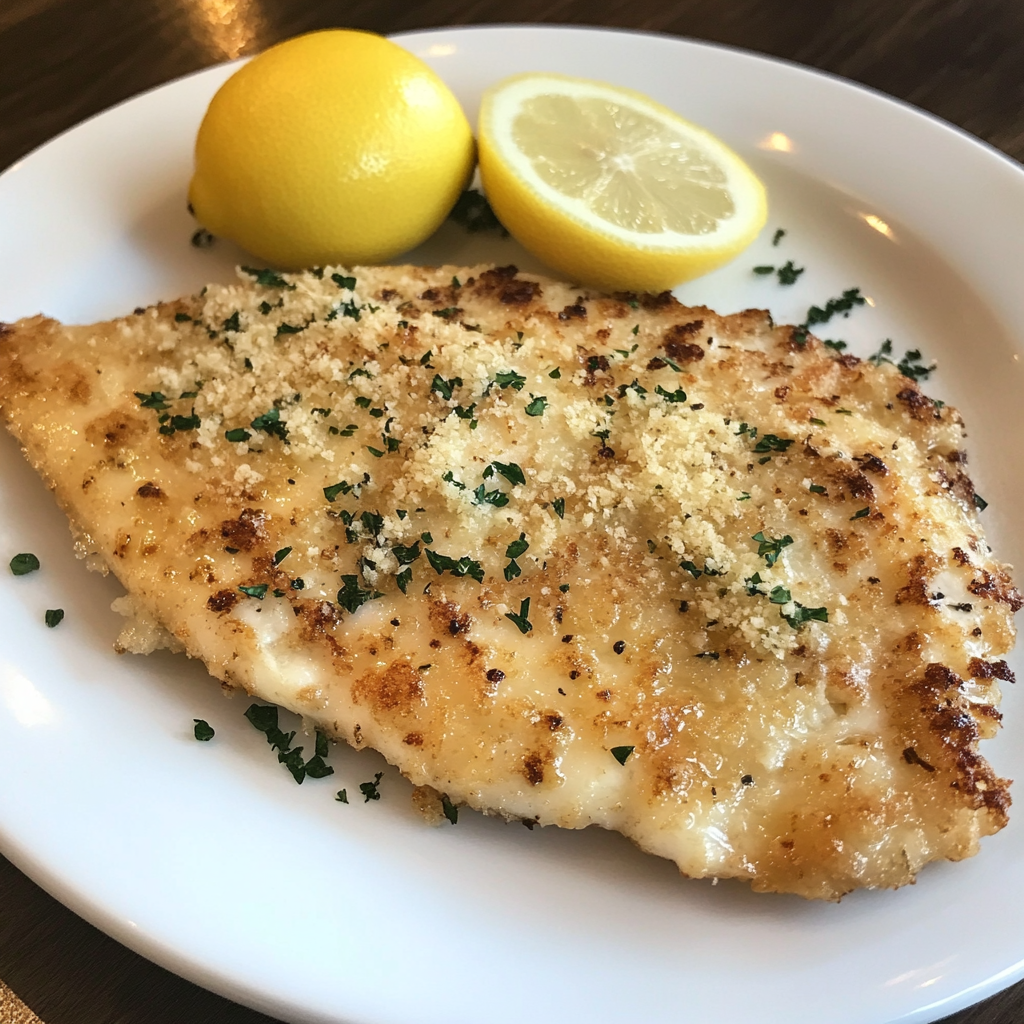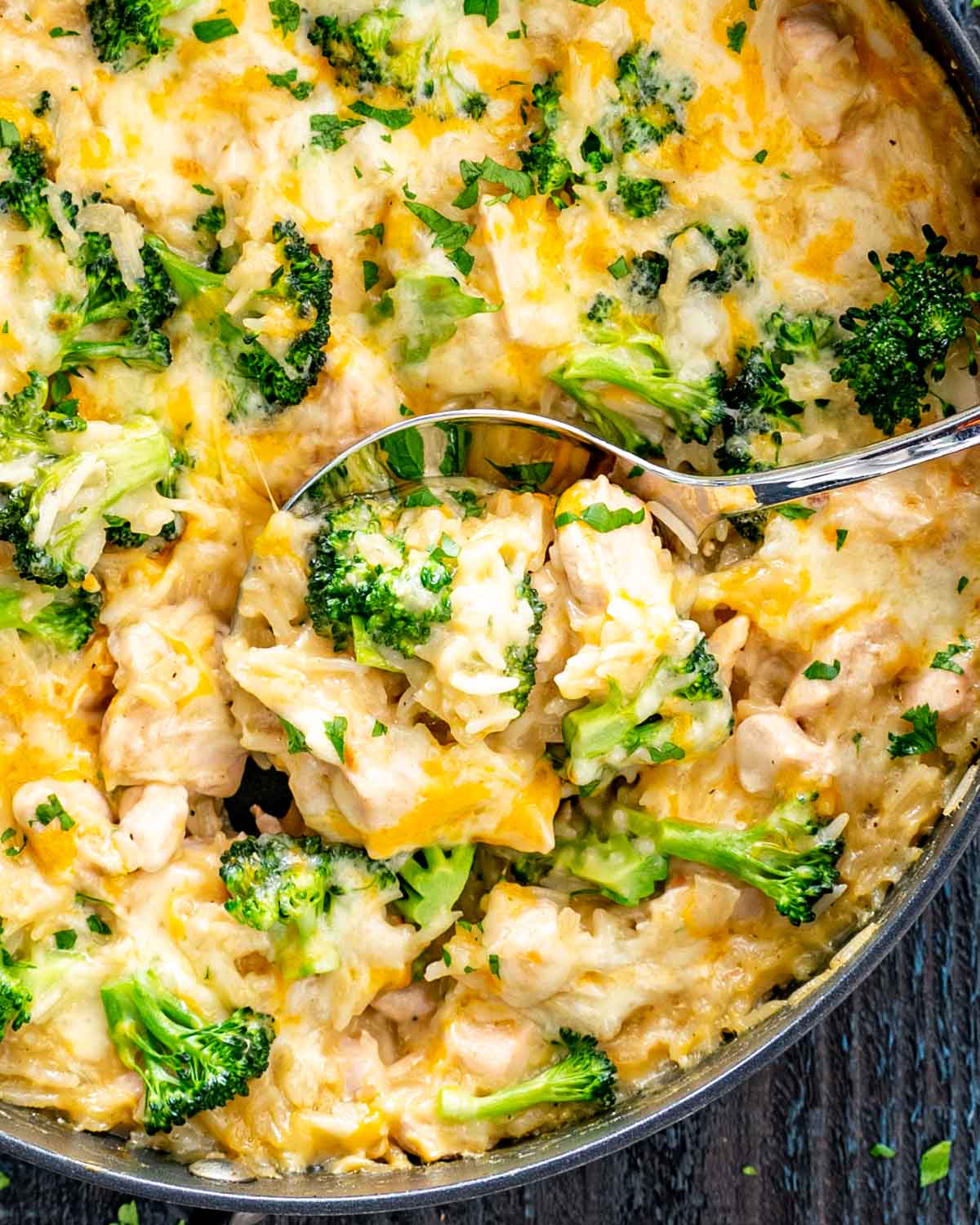Sharing is caring!
Parmesan Flounder Recipe
Why You’ll Love Parmesan Flounder?
Parmesan flounder is a quick, flavorful dish that brings gourmet taste to your weeknight dinner table. With its crispy parmesan crust and tender, flaky fish, this recipe is perfect for busy evenings when you want something delicious without the fuss. Whether you’re cooking for family or hosting a last-minute dinner, this dish pairs beautifully with a roasted cauliflower salad for a complete meal. Ready in just 20 minutes, it’s a foolproof way to enjoy restaurant-quality seafood at home.
Table of Contents
- Ingredients to make Parmesan Flounder
- Time needed to make parmesan flounder?
- Quick Steps to Make Parmesan Flounder?
- Is parmesan flounder healthy and nutritious ?
- Can I make parmesan flounder healthier and still delicious?
- How to Serve Parmesan Flounder?
- Avoid These Mistakes
- The best way to store leftover parmesan flounder
- Ready to give parmesan flounder a try?
- Frequently Asked Questions
Ingredients to make Parmesan Flounder
- 4 flounder fillets (about 6 oz each)
- 1/2 cup grated Parmesan cheese
- 1/4 cup breadcrumbs (Panko for extra crunch)
- 1 tsp garlic powder
- 1 tsp dried parsley
- 1/2 tsp paprika
- 1/4 tsp black pepper
- 1/4 tsp salt
- 2 tbsp melted butter
- 1 tbsp olive oil
- 1 lemon (for garnish)
- Fresh parsley (optional, for garnish)
Time needed to make parmesan flounder?
This parmesan flounder recipe is perfect for busy weeknights—ready in just 20 minutes! Here’s the breakdown:
- Prep Time: 10 minutes (seasoning, coating, and preheating)
- Cook Time: 10 minutes (baking or pan-searing)
- Total Time: 20 minutes
For a complete meal, pair it with a quick roasted cauliflower salad or another speedy side.
Quick Steps to Make Parmesan Flounder?
Step 1: Prep the Fish
Pat dry the flounder fillets with paper towels to remove excess moisture. This helps the parmesan coating stick better and ensures a crispier finish.
Step 2: Season Generously
Sprinkle both sides of the fillets with salt, black pepper, and a pinch of garlic powder. For extra flavor, add a light dusting of paprika or Italian seasoning.
Step 3: Coat with Parmesan Mixture
In a shallow dish, mix grated parmesan cheese with breadcrumbs (or almond flour for a low-carb option). Press each fillet into the mixture, coating both sides evenly.
Step 4: Pan-Sear to Perfection
Heat olive oil or butter in a skillet over medium-high heat. Cook the fillets for 3-4 minutes per side until golden brown and the fish flakes easily with a fork.
Step 5: Garnish & Serve
Squeeze fresh lemon juice over the cooked parmesan flounder and garnish with chopped parsley or basil. Pair it with a side like roasted cauliflower salad for a complete meal.
Is parmesan flounder healthy and nutritious ?
Parmesan flounder is not only delicious but also packed with essential nutrients. A single serving provides a good balance of protein, healthy fats, and vitamins. Flounder itself is a lean fish rich in omega-3 fatty acids, which support heart health and reduce inflammation. The parmesan cheese adds calcium and protein, making this dish a nutritious choice for a balanced diet.
For those tracking macros, a typical serving contains around 250–300 calories, with 25g of protein, 15g of healthy fats, and minimal carbs. If you’re looking for more low-carb meal ideas, check out our keto shrimp salad or chicken cauliflower fried rice for additional healthy options.
For more insights on nutritious seafood recipes, explore slow-cooker seafood stews or plant-based protein alternatives to diversify your meal plan.
Can I make parmesan flounder healthier and still delicious?
Absolutely! You can enjoy a lighter version of parmesan flounder without sacrificing flavor. Try swapping regular breadcrumbs for whole wheat or almond flour for added fiber. Instead of frying, bake the flounder with a light spray of olive oil to reduce unnecessary fats. For a dairy-free option, use nutritional yeast in place of parmesan—it still delivers that cheesy umami kick!
Pair your healthier parmesan flounder with a roasted cauliflower salad for a balanced meal. If you’re looking for more low-carb inspiration, check out this keto shrimp salad recipe. For extra tips on reducing sodium, explore slow-cooker techniques that enhance natural flavors. Want to boost omega-3s? Try adding flaxseed meal to the coating—learn more about healthy fats in this plant-based soup guide.
How to Serve Parmesan Flounder?
This crispy parmesan flounder pairs beautifully with light sides that complement its delicate flavor. For a balanced meal, try serving it with a refreshing roasted cauliflower salad or a vibrant Mediterranean chickpea salad. If you prefer something heartier, roasted sweet potatoes or garlic sautéed spinach work wonderfully.
For wine pairings, a crisp Sauvignon Blanc or Pinot Grigio enhances the dish’s flavors. If you’re looking for non-alcoholic options, try a citrus-infused sparkling water or a light herbal tea. Garnish with fresh lemon wedges and chopped parsley for a bright finish. For more elegant seafood plating ideas, check out these gourmet presentation tips or explore classic pairing suggestions to elevate your meal.
Avoid These Mistakes
Even the simplest dishes can go wrong if you overlook key details. Here are common mistakes to avoid when making parmesan flounder:
1. Overcooking the Fish
Flounder cooks quickly—just 3-4 minutes per side. Overcooking makes it dry and rubbery. Use a timer and check for flakiness with a fork. For perfectly tender fish, pair it with a roasted cauliflower salad to balance textures.
2. Skipping the Pat-Dry Step
Moisture prevents the parmesan crust from crisping. Always pat fillets dry with paper towels before seasoning. This trick also works for achieving crispy skin in dishes like slow-cooked stews.
3. Using Pre-Grated Parmesan
Pre-shredded cheese contains anti-caking agents that hinder melting. Freshly grated parmesan gives a smoother, richer crust. For cheesy inspiration, try this vegetable quiche with a homemade crust.
4. Crowding the Pan
Overlapping fillets steam instead of sear. Cook in batches if needed, similar to techniques used in layered soups. A single layer ensures even browning.
5. Forgetting to Season the Flour
Underseasoned coating = bland fish. Mix salt, pepper, and garlic powder into the flour first. For more flavor-building tips, explore this creamy smothered chicken recipe.
The best way to store leftover parmesan flounder
To keep your parmesan flounder fresh, store it in an airtight container in the refrigerator for up to 2 days. For longer storage, wrap individual portions tightly in plastic wrap or aluminum foil before freezing—they’ll stay good for up to 3 months. When reheating, use an oven or toaster oven at 350°F (175°C) for 10–12 minutes to maintain crispiness. Avoid microwaving, as it can make the coating soggy. Pair your leftovers with a light roasted cauliflower salad or a refreshing Mediterranean chickpea salad for a quick meal. For more freezer-friendly tips, check out The Stay at Home Chef’s guide or Cooked by Julie’s storage hacks.
Ready to give parmesan flounder a try?
This quick and easy parmesan flounder recipe is perfect for busy weeknights when you want a delicious, healthy meal without the hassle. With its crispy, cheesy crust and tender, flaky fish, it’s sure to become a family favorite. Pair it with a roasted cauliflower salad or a Mediterranean chickpea salad for a complete meal. If you’re looking for more seafood inspiration, check out our keto shrimp salad or creamy smothered chicken for another protein-packed option.
Frequently Asked Questions
Can I use frozen flounder for this recipe?
Yes, frozen flounder works well. Thaw it completely in the refrigerator before cooking to ensure even baking.
What can I substitute for Parmesan cheese?
Pecorino Romano or Asiago cheese make great alternatives. For a dairy-free option, try nutritional yeast.
How do I know when the flounder is fully cooked?
The fish should flake easily with a fork and reach an internal temperature of 145°F (63°C).
Can I prepare this dish ahead of time?
You can bread the fish up to 2 hours in advance, but bake it fresh for the best texture.
What sides pair well with parmesan flounder?
Light options like roasted vegetables or a fresh salad complement the dish perfectly.










